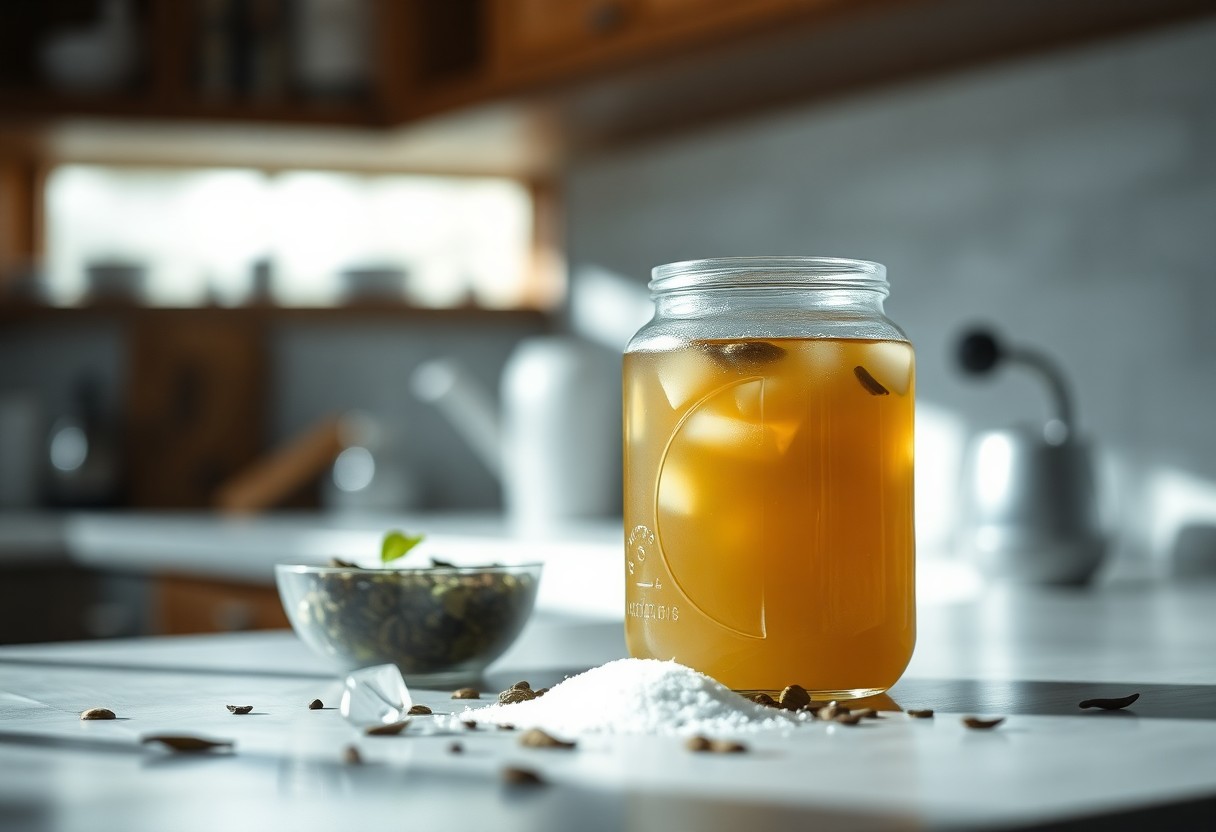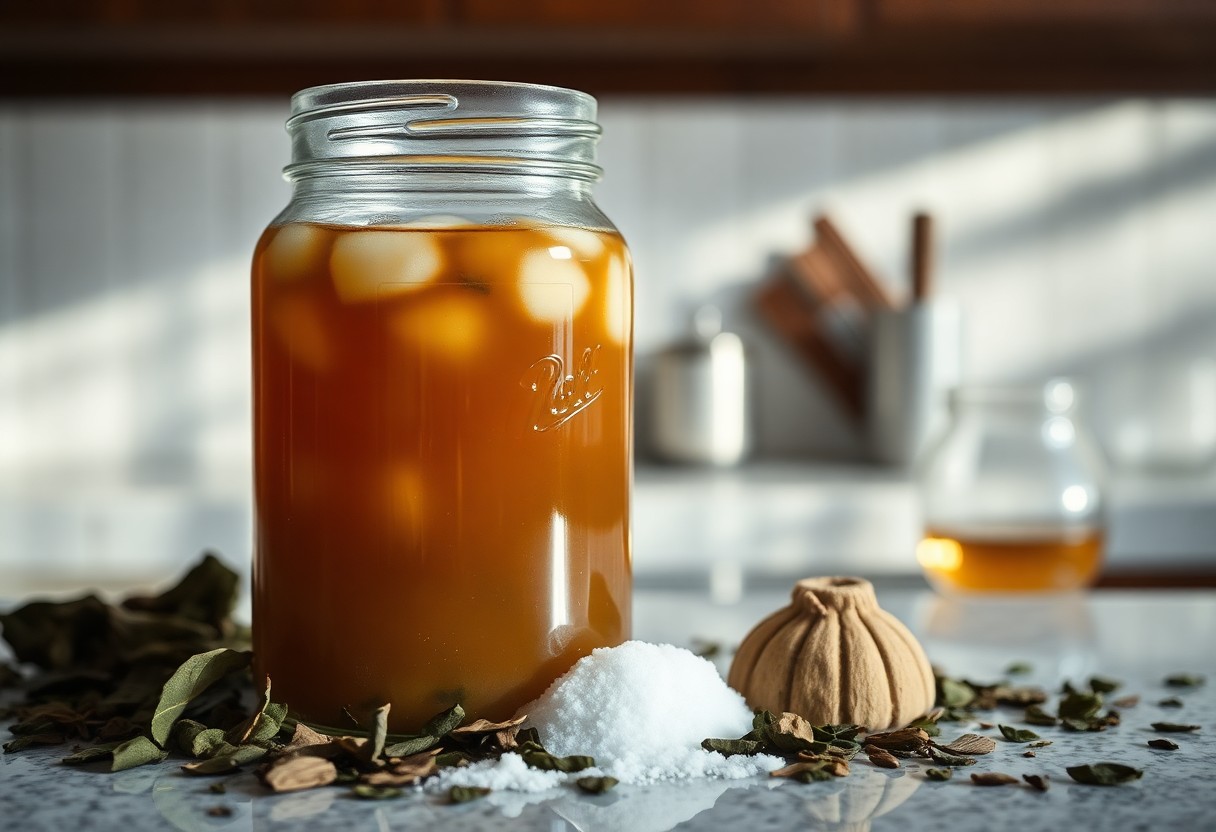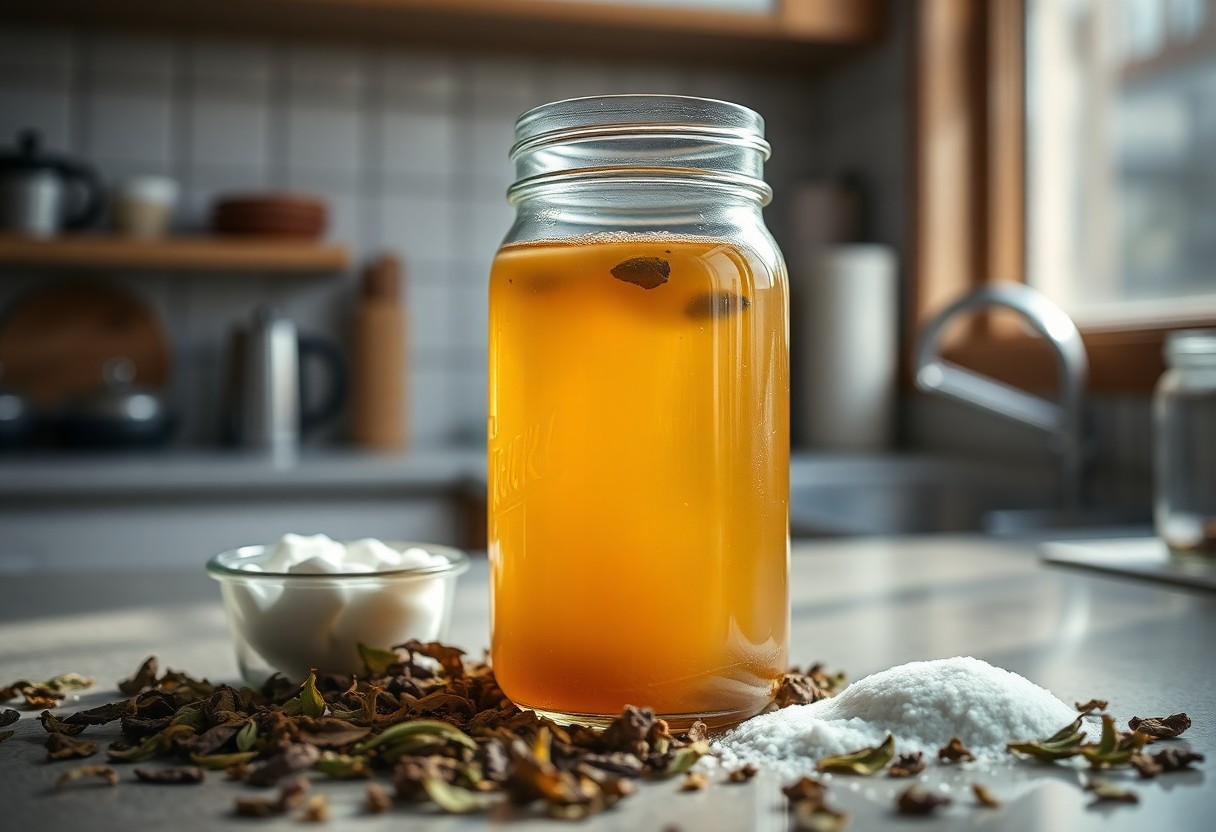How Do You Brew Kombucha at Home?
You’ve probably noticed kombucha’s growing popularity in stores, but did you know you can make this fizzy, probiotic tea right in your kitchen? Brewing your own kombucha isn’t just cost-effective – it lets you control the flavor and fermentation level while providing a steady supply of this healthy beverage. With basic ingredients like tea, sugar, and a SCOBY (Symbiotic Culture of Bacteria and Yeast), you’ll discover that homemade kombucha is both simple and rewarding. Follow these steps to start your kombucha-brewing journey.
Understanding Kombucha
For anyone interested in home brewing, kombucha offers an exciting journey into fermentation. This ancient fermented tea beverage has gained immense popularity for its unique taste and potential health benefits. You’ll find that making kombucha at home allows you to control ingredients, customize flavors, and save money while enjoying this effervescent drink.
What is Kombucha?
With its origins dating back thousands of years, kombucha is a fermented tea drink made by combining sweetened tea with a SCOBY (Symbiotic Culture of Bacteria and Yeast). When you brew kombucha, the SCOBY transforms the sweet tea into a tangy, fizzy beverage through fermentation, creating a complex blend of beneficial compounds.
Health Benefits of Kombucha
Understanding the health potential of kombucha can enhance your appreciation for this beverage. Your daily glass of kombucha can provide probiotics, antioxidants, and beneficial acids that may support digestive health, boost immunity, and enhance overall well-being.
Kombucha offers you a range of potential health advantages through its unique composition. When you consume this fermented beverage regularly, you may experience improved gut health due to its probiotic content, enhanced energy levels from B vitamins, and better digestion from organic acids. Your body can also benefit from its detoxifying properties and immune-supporting compounds.
Essential Ingredients and Equipment
Any successful kombucha brewing journey starts with gathering the right ingredients and equipment. Your initial setup doesn’t need to be complex, but having quality components will ensure better results. The basic requirements include tea, sugar, a SCOBY (Symbiotic Culture of Bacteria and Yeast), and some specific brewing vessels.
Key Ingredients for Brewing
Some basic ingredients you’ll need include plain black or green tea (avoid flavored varieties), white granulated sugar, filtered water, and a healthy SCOBY with starter tea. Your tea selection will influence the final taste, while sugar provides food for fermentation. The SCOBY and starter tea introduce the necessary cultures to begin the fermentation process.
Necessary Equipment
Assuming you’re ready to start brewing, you’ll need a large glass jar (1-2 gallons), a breathable cloth cover, rubber bands, a wooden spoon, pH strips, and bottles for the second fermentation. Your brewing vessel should be clean and made of glass, as metal or plastic containers can interfere with the fermentation process.
Ingredients and equipment quality directly affects your kombucha’s taste and brewing success. You’ll want to ensure your glass containers are thoroughly cleaned but not with antibacterial soap, as residue can harm the SCOBY. Your cloth cover needs to be tightly woven enough to keep out fruit flies but allow airflow. When deciding on bottles for the second fermentation, choose ones that can withstand pressure buildup.
Step-by-Step Brewing Process
Some basic equipment and ingredients are all you need to start brewing your own kombucha. The process involves preparing tea, adding sugar and SCOBY, followed by fermentation and optional flavoring.
| Equipment | Ingredients |
| Glass jar | Black or green tea |
| Breathable cloth | White sugar |
| Rubber band | SCOBY |
| pH strips | Starter tea |
Preparing the Tea Base
One of your first steps is brewing a strong batch of tea. You’ll need to steep 8-10 tea bags in 8 cups of hot water for about 15 minutes. After removing the tea bags, dissolve 1 cup of sugar while the tea is still hot. Let the mixture cool completely to room temperature to protect your SCOBY.
Fermenting the Mixture
You’ll need to combine your cooled sweet tea with the SCOBY and starter tea in a clean glass container. Cover the jar with a breathable cloth and secure it with a rubber band. Place your brew in a dark, room-temperature spot (68-75°F).
Fermenting typically takes 7-10 days, depending on your taste preference and room temperature. During this time, you’ll notice a new SCOBY forming on top of your brew and the liquid becoming less sweet. Test the flavor every few days using a clean straw.
Adding Flavors (Optional)
Some popular additions include fresh fruit juice, herbs, or spices to enhance your kombucha’s taste. After the first fermentation, remove the SCOBY and pour the kombucha into bottles with your chosen flavoring ingredients.
It’s best to use about 10-20% juice or flavoring to your kombucha. This second fermentation typically takes 2-3 days at room temperature and creates natural carbonation. You can experiment with different combinations like ginger-lemon, berry medley, or mint to find your perfect blend.
Tips for Successful Brewing
All successful kombucha brewing relies on maintaining cleanliness and following precise measurements.
- Use clean, sterilized equipment
- Measure ingredients accurately
- Keep brewing vessel away from direct sunlight
- Monitor fermentation progress daily
- Store SCOBY properly between brews
Though patience might feel challenging, resist the urge to disturb your brew frequently.
Common Mistakes to Avoid
Even experienced brewers can slip up occasionally. Avoid using metal containers or utensils that can harm your SCOBY. Don’t rush the fermentation process by increasing temperature, and never use flavored or decaffeinated tea as your base. Keep your brewing vessel away from other fermenting foods to prevent cross-contamination.
Ideal Brewing Conditions
With proper temperature control between 68-78°F (20-26°C), your kombucha will thrive. Place your brewing vessel in a dark, quiet spot with good air circulation. Maintain consistent temperature throughout the fermentation period, and keep your brew covered with a tight-weave cloth to prevent insects while allowing airflow.
Mistakes in maintaining ideal conditions can affect your brew’s taste and SCOBY health. You’ll notice slower fermentation at lower temperatures, while higher temperatures might lead to overly sour kombucha. Your brewing space should be free from strong odors and cooking fumes that could impact the fermentation process.
Factors Affecting Flavor and Fermentation
Many elements influence your kombucha’s final taste and fermentation process. The key factors include temperature, brewing duration, tea selection, and sugar content.
- Environmental conditions
- SCOBY health
- Container size
- Water quality
Assume that each batch will be unique based on these variables.
Temperature and Time
You need to monitor both temperature and brewing duration for optimal results.
| Factor | Recommendation |
|---|---|
| Ideal Temperature | 68-78°F (20-26°C) |
| Minimum Time | 7 days |
| Maximum Time | 14 days |
| Temperature Check | Daily |
| Taste Test | Every 2-3 days |
Tea Types and Sweetness Levels
Sweetness levels and tea selection directly impact your kombucha’s character.
- Black tea produces classic flavor
- Green tea offers lighter taste
- Oolong adds complexity
- White tea creates subtle notes
Thou should experiment with different combinations to find your preferred blend.
| Tea Type | Sugar Ratio (per gallon) |
|---|---|
| Black Tea | 1 cup |
| Green Tea | 3/4 cup |
| Oolong Tea | 7/8 cup |
| White Tea | 2/3 cup |
| Herbal Tea | Not recommended |
Plus, combining different tea types can create unique flavor profiles.
- Mix black and green tea
- Blend oolong with black tea
- Combine white and green tea
- Add fruit teas for second ferment
Thou will discover endless possibilities through experimentation.
Bottling and Storing Your Kombucha
Despite being near the end of your kombucha brewing journey, bottling and storage play vital roles in determining your final product’s quality. These steps influence carbonation levels, flavor development, and shelf life. With proper techniques and the right containers, you’ll achieve that perfect fizzy kombucha you’re aiming for.
Proper Bottling Techniques
Bottling your kombucha requires clean, airtight glass containers with secure lids. You’ll want to leave about one inch of headspace in each bottle to allow for carbonation development. Strain your kombucha through a fine-mesh strainer while transferring it to bottles, and consider adding flavoring ingredients like fruit or herbs at this stage for a second fermentation.
Best Practices for Storage
To maintain your kombucha’s quality, store bottles at room temperature for 1-3 days during second fermentation, then refrigerate. You’ll need to “burp” your bottles daily by quickly opening and closing the lids to release excess pressure and prevent overflow or explosion.
Storage conditions significantly impact your kombucha’s longevity and taste. Keep bottles away from direct sunlight and heat sources, which can alter flavor and kill beneficial probiotics. Your bottled kombucha can last 3-6 months when refrigerated, though you’ll enjoy the best taste and fizz within the first month.
Summing up
Following this step-by-step brewing process will help you create delicious, homemade kombucha that rivals store-bought varieties. By maintaining proper sanitation, using quality ingredients, and monitoring fermentation temperatures, you’ll develop a consistent brewing routine. Your patience during the fermentation stages pays off with a refreshing, probiotic-rich beverage that you can customize to your taste preferences. Once you master these basics, you can experiment with different tea varieties and flavoring combinations to create your signature kombucha blend.








